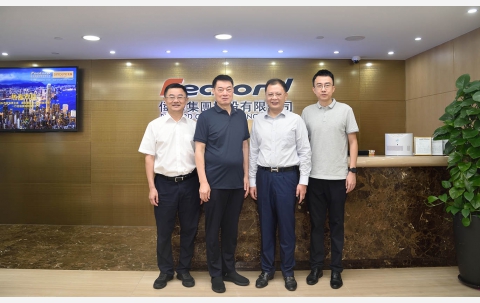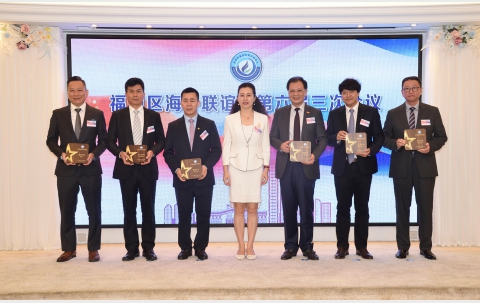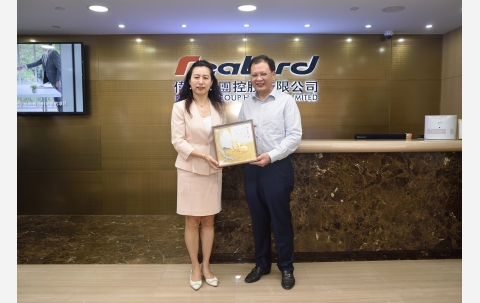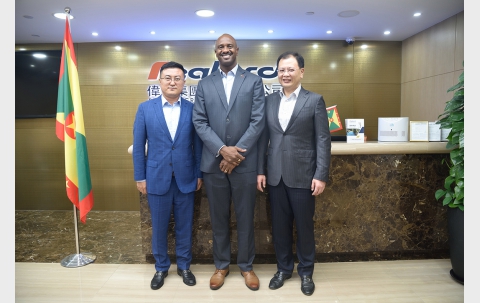Press Release
NCCPPCC Member Lin Xiaohui participates HKSAR's seminar "Improving Regional Governance and Creating Better Communities"
(31 October, 2023 – Hong Kong) In order to further promote the Hong Kong Special Administration Region (HKSAR)'s efforts to improve the regional governance system and reshape the District Council, the HKSAR Government held a seminar named "Improving Regional Governance and Creating a Better Community". Chief Executive of the Hong Kong Special Administrative Region John Lee Ka-chiu, Director of the Liaison Office of the Central Government in Hong Kong Zheng Yanxiong and others attended the meeting. Representatives from various sectors of the community, leaders of patriotic and Hong Kong political groups, authoritative experts and scholars participated in the meeting. Dr. Bryan Lin Xiaohui, member of the National Committee of the Chinese People's Political Consultative Conference, Realord Group Holdings Limited (1196.HK) and Sincere Company Limited (0244.HK) Chairman, was invited to attend the meeting. Lin believes that "the improved district council elections will definitely improve regional development and people's livelihood issues, and give full play to the functions of district councils. Under the new electoral system, a group of capable and wise people will be selected for Hong Kong from the grassroots. Contribute to the future development of Hong Kong from the bottom up, so that more citizens can share the dividends of Hong Kong’s development.”
A delegation from the Culture and Sports Department of the Hong Kong Federation of Journalists visited Realord Group
(27 October, 2023 – Hong Kong) Hong Kong Federation of Journalists Vice Chairman, Hong Kong Bauhinia Magazine Chairman Yang Yong led members of the Culture and Sports Department of the Hong Kong Federation of Journalists, including the heads of central media in Hong Kong and the person in charge of Hong Kong's mainstream media, to visit Realord Group's Hong Kong headquarter. Member of the National Committee of the Chinese People’s Political Consultative Conference, Realord Group Holdings Limited & Sincere Company Limited Chairman Dr. Bryan Lin Xiaohui warmly welcomed the guests.
Realord Group Holdings Limited Chairman Dr. Bryan Lin introduced Realord Group's business overview. Hong Kong Federation of Journalists Vice Chairman, Hong Kong Bauhinia Magazine Chairman Yang Yong Introduced that the Hong Kong News Federation was established in 1996. It is the news organization with the broadest membership and the largest number of members in Hong Kong. Its members cover all major print, electronic and new media in Hong Kong, as well as teachers from university journalism departments and people from large enterprises. In the future, the Communication Senior Management and the Culture and Sports Department of the Press Federation will strengthen ties with relevant national institutions, key enterprises and industry associations through various activities in the future, actively promote the normalization of communication in the press, and enrich the cultural and sports life of members. Use practical actions to enhance the members’ sense of gain, belonging and honor; vigorously attract and recruit young colleagues to join the association, and cultivate future media professionals who love the country and Hong Kong.
General Secretary Xi Jinping's important speech at the Chinese National Day aroused enthusiastic response. Member of NCCPPCC Bryan Lin: Injecting endless momentum to Hong Kong
General Secretary Xi Jinping's important speech at the reception celebrating the 74th anniversary of the founding of the People's Republic of China aroused enthusiastic responses among the cadres and the masses. Everyone said that on the new journey, we must adhere to the guidance of Xi Jinping Thought on Socialism with Chinese Characteristics for a New Era, strengthen our confidence, inspire our spirit, work in unity, continue to climb uphill and overcome difficulties, and unswervingly move towards building a strong country and rejuvenating our nation. march forward bravely towards our grand goal.
Your browser does not support HTML video.
General Secretary Xi Jinping pointed out in his speech that since the founding of the People's Republic of China 74 years ago, our country has gone from poverty to a moderately prosperous society in all respects, and has embarked on a new journey of comprehensively promoting the construction of a powerful country and national rejuvenation with Chinese-style modernization. Great achievements achieved through hard work. Everyone feels the same about this.
Lin Xiaohui, a member of the National Committee of the Chinese People's Political Consultative Conference of Hong Kong, said that President Xi's speech emphasized the need to continue to comprehensively, accurately and unswervingly implement the "one country, two systems" policy, implement the principle of "patriots governing Hong Kong", and support Hong Kong's economic development and improvement of people's livelihood. It reflects the central government's full support for Hong Kong's participation in the construction of the Guangdong-Hong Kong-Macao Greater Bay Area and the joint construction of the "Belt and Road", injecting endless development momentum into Hong Kong. The intersection of Hong Kong's new starting point and the country's new journey will surely create a powerful synergy and burst out huge energy. In the magnificent journey of the great rejuvenation of the Chinese nation, Hong Kong cannot and will not be absent.
Realord Group Announces 2023 Interim Results: Recorded Revenue HK$392 million
(28 August, 2023 – Hong Kong)
Highlights:
Revenue was approximately HK$392.5 million, down 32.7% year-one-year
Gross profit was approximately HK$155.1 million, a year-on-year increase of 12.6%
Profit attributable to owners of the group reached approximately HK$48.6 million
Profit from the financial services segment increased by 1.66 times to HK$45 million
Earnings per share 3.37 Hong Kong cents
Financial Highlights:
For the 6 months ended 30 June
HK$’000
1H2023
1H2022
Change
Revenue
392,469
583,297
-32.7%
Gross profit
155,081
137,783
+12.6%
Profit attributable to owners
48,561
51,275
-5.3%
Basic earnings per share (HK cents)
3.37
3.56
-5.3%
(August 28, 2023 - Hong Kong) Realord Group Holdings Limited (the "Company", together with its subsidiaries collectively referred to as the "Group", Hong Kong stock code: 1196) announces the unaudited condensed consolidated results of the company and its subsidiaries for the six months ended 30 June 2023. During the period under review, the Group’s revenue was HK$392.46 million, down 32.7% from the same period last year; gross profit was HK$155.1 million, up 12.6% from the same period last year; profit attributable to shareholders in the first half of the year was HK$48.6 million, down year-on-year 5.3%. During the period under review, the basic earnings per share was HK3.37 cents.
Business review and outlook and corporate strategy
The Group's main businesses include property management, financial services, environmental protection, vehicle parts, department stores, and Latin America and the Caribbean.
Property Segment
The revenue from property classification mainly comes from rental income of investment properties. In the first half of 2023, the Group obtained rental income of 8.9 million Hong Kong dollars. The increase in rental income is primarily due to an increase in the number of tenants at Sincere Mall.
In the first half of 2023, the development progress of the five Shenzhen Property projects are varied. The number of tenants of Sincere Mall in Realord Villas in Longhua District has increased to 49, which include children's amusement center, education center, restaurants, fitness studios and billiard shop. Realord Science and Technology Park, located in Guangming District and with a gross floor area (GFA) of about 81,000 square meters, will start its second phase development plan immediately after obtaining government approval. The urban renewal project of the Qiankeng Property (also known as the “Guanzhang Electric Factory Urban Renewal Unit”) with GFA of approximately 112,000 square meters will commence after obtaining permits from the relevant government authorities. The Zhangkengjing Industrial Park Property (also known as the Urban Renewal Project of Qianhai Realord Cross-border Logistics Park), located in Longhua District, and its application for changing the land use from industrial use to residential apartment and commercial use is still under review. As for the Laiying Garden project in Nanshan District, the Group was granted a construction land planning permit by the relevant government authority, and its reconstruction works are expected to commence after obtaining the permit from the relevant government authority.
Latin American and Caribbean Segment
Grenada development project in (located in the Hartman Hill area of St. George's Parish and divided into three lots with an area of 450 acres) (the "Grenada Project") involves the development of a mixed property project, including educational facilities, student apartments residential properties, hotels and resort facilities, commercial developments and shopping facilities, and the longer planned establishment of university institutions and related amenities.
Through the Grenada Project's Citizenship by Investment Program (“CBI Program”), the Group is allowed to raise funds from investors of the project to finance the construction and development of the project. Qualified investors who invest real estate on the project will be granted a permanent citizenship and passport to Grenada. In the first half of 2023, the Group's revenue from CBI program consulting services was HK$68,000.
Leveraging on its experience in the Grenada project, the Group has further targeted investment in four other Caribbean countries, namely Antigua and Barbuda, St. Lucia, St. Kitts and Nevis, and Dominica, and has identified clean energy, education, Investment proposals in the four fields of tourism and retail, hoping to cooperate with relevant local governments.
The group is currently looking for business partners with strong strength and excellent track record to participate in projects in designated Caribbean countries and the Republic of Panama. According to the planning and feasibility studies of the projects, as well as the necessary approvals from various local governments, it is expected that the Group will start these projects in the relevant areas in the near future. To this end, the group has established a management and marketing team, and has offices in Beijing, Shanghai, Shenzhen and Hong Kong, and has established sales networks in Vietnam and the United States to implement the CBI plans and investment opportunities formulated for the promotion of the above countries marketing strategy.
Financial Services Segment
In terms of financial services, during the period under review, the revenue generated was approximately HK$88.2 million, a year-on-year increase of 5.0%, and the profit was approximately HK$45 million, a year-on-year increase of 1.66 times. The increase in profit was mainly attributable to the increase in interest income from credit-impaired loans receivables and the decrease in staff costs. In the first half of 2023, under the shadow of high inflation and sharply rising interest rates, the overall global market conditions were down. However, as the epidemic recedes and society returns to normal, the financial services category is committed to providing customers with diversified and high-quality services in the primary and secondary markets. Revenues from margin financing and IPO placements continued to rise, driving the financial services segment to grow steadily amid the downturn.
Department Store Segment
For the department store segment, revenue generated during the period under review was approximately HK$74.3 million, representing an increase of 7.6% compared to the same period last year, mainly due to the gradual recovery of economic activities in Hong Kong and the resumption of customs clearance with Mainland China in the first half of 2023. At the same time, the Group continued to take proactive measures to reduce operating expenses and obtain rental concessions, resulting in a 77.9% reduction in losses compared to the first half of 2022.
Mr. Bryan Lin, chairman of Realord Group said: "Realord Group has confidence in the investment prospects in Latin America and the Caribbean, and will enhance its leadership in the Latin American market and increase Market share. The group will put the interests of shareholders and investors first, and strive to bring the best returns.”
Former chairman of the Shantou CPPCC & chairman of the International Teochew Federation Chairman Xie Zesheng visited Realord Group & Sincere
On August 9, Xie Zesheng, former chairman of the Shantou CPPCC and Chairman of the Teochew International Federation and Hong Yuehao, deputy director of the United Front Work Department of Shantou Municipal Party Committee, Chairman of the Overseas Chinese Federation, and Director of the Overseas Chinese Affairs Bureau, visited Realord Group and The Sincere Company. Dr. Bryan Lin, member of the National Committee of the Chinese People’s Political Consultative Conference, Chairman of Futian District Federation of Industry and Commerce, Chairman of Realord Group and Sincere Company arranged a meeting with them.
Xie said that he felt awesome for this visit. There are many Teochew elites over the world nowadays. He believed that Dr. Bryan Lin, who is young and promising, is a distinguished representative of the new generation of Teochew elites. In addition, Xie also introduced the background of the Teochew International Federation, the current development overview, investment opportunities as well as the advantages of Shantou. He also welcomes Chaozhou Enterprises or non-Chaozhou Enterprises to come there invest.
Bryan Lin thanked Xie taking time out of his busy schedule to visit Realord Group. Having Xie’s introduction to the future planning and development of Shantou, he felt benefited a lot, especially feeling honored that Xie invited Realord Group to invest there.
Lin said that regarding Shantou’s investment opportunities in offshore power generation, energy storage and environmental protection, he will organized a visit to there in the future. He also wished the next year’s annual dinner of the International Teochew Federation will be completed successfully.
Bryan Lin and Linus Lin were invited to participate in the release of the "All-round Living Guide for Hong Kong & Macao Residents in Futian"
On July 28, "All-round Living Guide for Hong Kong & Macao Residents in Futian" ("Guide") was officially released in Hong Kong. The release of the Guide will further promote the integrated development of Shenzhen, Hong Kong and Macao, and facilitate Hong Kong and Macao residents to study, work, live, and start a business. Zhong Jichang, Director of the Liaison Department of the Liaison Office of the Central Committee of the Communist Party of China, Patrick Lau, Vice President of the Hong Kong Trade Development Council, Wu Huan, Member of the Standing Committee of the Futian District Committee & Director of the United Front Work Department, and Executive Chairman of the Futian District Overseas Friendship Association, Member of the National Committee of the Chinese People's Political Consultative Conference, Chairman of the Futian District Federation of Industry and Commerce, Chairman of Realord Group and the Sincere Company Dr. Bryan Lin, Member of the Standing Committee of the Futian District CPPCC & Vice chairman of Realord Asia Pacific Securities Linus Lin, representatives of the Chinese General Chamber of Commerce, the Chinese Manufacturers' Association of Hong Kong, the Federation of Hong Kong Industries, the Federation of Industry and Commerce of all districts in Hong Kong, and representatives of Hong Kong friendly societies attended the meeting Activity. At the end of the release event, the third council meeting of the sixth session of the Futian District Overseas Friendship Association was held on the spot, and Dr. Bryan Lin was adjusted as the Honorary Chairman of the Futian District Overseas Friendship Association.
Member of the Standing Committee of the Futian District Committee and Minister from the United Front Work Department Wu Huan visits Realord & Sincere
On the afternoon of July 27, Wu Huan, member of the Standing Committee of the Futian District Committee and head of the United Front Work Department, led a team to visit Realord Group and Sincere Group and had a discussion with Dr. Bryan Lin, member of the National Committee of the Chinese People's Political Consultative Conference, Chairman of Realord Group & The Sincere Company. The team visited the group headquarters and Sincere’s Central store on the spot, and listened to the Group's development and planning. Bryan Lin said that Realord Group was developed from Futian, and the company's development also adheres to the needs of the country and closely follows the national strategies. It has always had a “Chinese heart” and a “Futian heart”. Wu Huan said that Lin led the Taxi Association in a special period to gather the patriotic forces of Hong Kong, support "patriots governing Hong Kong", and make important contributions to the central government's improvement of the electoral system of the Hong Kong Special Administrative Region and the maintenance of the basic national policy of "one country, two systems". It is hoped that enterprises will continue to create platforms and opportunities for Shenzhen and Hong Kong youth entrepreneurship exchanges while developing and growing, and promote the integrated development of Shenzhen and Hong Kong.
Ambassador-Designate Embassy of Grenada to China Ian Marshall Visits Realord Group
On July 13, Mr. Ian Marshall, Ambassador-Designate, Embassy of Grenada to the People’s Republic of China visited Realord Group’s Hong Kong headquarter. Members of the National Committee of the Chinese People's Political Consultative Conference, Realord Group (1196.HK), and The Sincere Company (0244.HK) Chairman Lin Xiaohui warmly welcomed him.
This was Ambassador Marshall's first visit to Hong Kong after becoming Grenada's ambassador to China. In March 2023, after the election of the new Grenada government, Prime Minister Deacon Mitchell appointed a group of new diplomats, among whom Mr. Marshall was appointed as Grenada's new ambassador to China. On July 5, Mr. Marshall formally submitted a copy of his credentials to China and took office.
Lin welcomed him for taking time out of his busy daily diplomatic works to visit Realord Group. He said that Grenada and Latin America are the top priorities of Realord Group's future development. Realord Group attaches great importance to local investment and development opportunities, and is very grateful to the Grenada government for its policy support.
Ambassador Marshall said that he had worked in Realord Hartman Group and had deep feelings for the Group’s development and achievements. He highly recognized Realord Group’s investment in Grenada and the Latin America, and said that the Grenada Government with fully support Realord Group’s local investment and development, to make greater contributions to the development of Sino-Grenada’s friendship and the prosperity of the economic and trade exchanges between the two countries.

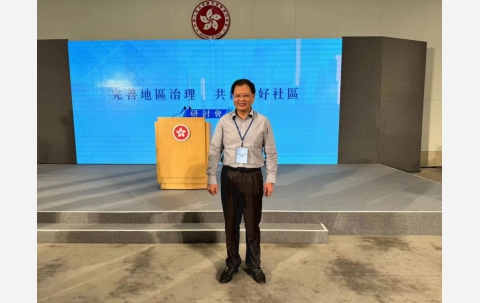
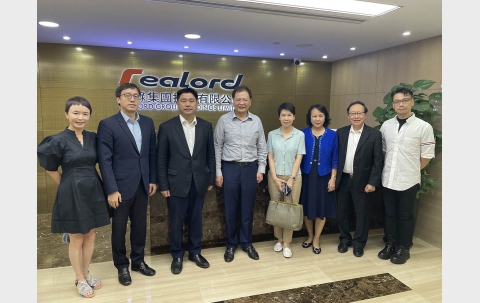
![2023-9-29.mp4_snapshot_01.11_[2023.09.30_09.29.45]](img/?width=480&height=303&bg=f3f3f3&file=upload%2Fpress%2F172%2Fphoto%2F65177a17eb32f.jpg)

